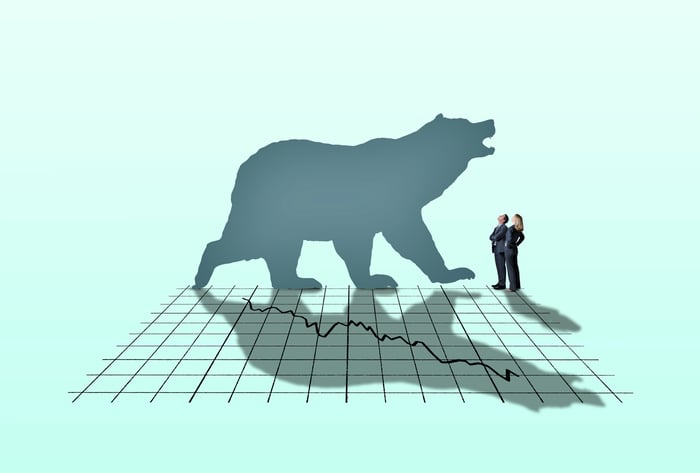While the stock market is still surging right now, investor sentiment may be taking a turn. Around 34% of U.S. investors feel “bearish” about the next six months, according to a weekly survey from the American Association of Individual Investors released in late January. That’s up from around 29% the week prior.
While nobody can predict what the market will do, especially in the short term, some metrics suggest that a downturn could be on the horizon.

Image source: Getty Images.
The Buffett Indicator, for example, suggests that a slump could be ahead. This indicator, made famous by Warren Buffett, measures the ratio of the total market capitalization of all publicly traded companies to U.S. gross domestic product (GDP). In 1999, Buffett used this indicator to predict that the market would soon face a steep downturn — a prediction that came true just a year later when the dot-com bubble burst.
“If the percentage relationship falls to the 70% or 80% area, buying stocks is likely to work very well for you,” he explained in an essay published in 2001. “If the ratio approaches 200% — as it did in 1999 and a part of 2000 — you are playing with fire.”
As of February 2025, the Buffett Indicator has reached 203.51%. While this metric alone doesn’t necessarily mean that a crash is coming, it could be wise to start taking precautions just in case. To protect my personal portfolio, there are three things I’m doing right now.
1. I’m stocking up my emergency fund
It’s always a good idea to have some cash stashed away for emergencies, but it’s extra important when a market downturn could be looming.
If stock prices fall, your portfolio could lose substantial value in the short term. As long as you stay invested, though, you likely won’t lose any money. The market will eventually rebound, and your portfolio should regain any value it lost.
However, if you pull your money out of the market after stock prices have dropped, you could end up selling your investments for far less than you paid for them — potentially locking in steep losses. If you don’t have an emergency fund and you face an unexpected expense during a market slump, it’s more likely you’ll need to tap your investments at a less-than-ideal time.
2. I’m combing through every investment in my portfolio
When the stock market is thriving, sometimes even shaky stocks can perform well. But a market downturn is the ultimate test of a company’s fundamentals, and weak businesses will often struggle to survive tough economic times.
The best way to ensure your portfolio pulls through the next bear market is to double-check that every stock you own is still a solid investment. Companies can change over time, so even if one of your stocks was a fantastic buy when you first purchased it, that doesn’t necessarily mean it’s still a strong choice now.
Stock price alone doesn’t necessarily reflect how strong a company is, so it’s wise to look at metrics beyond this number –…
Read More: Is a Stock Market Crash Looming? Here’s What I’m Doing to Protect My



